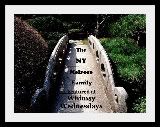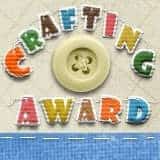When doing remodeling, you will inevitably need wall anchors to secure any one of a myriad of things to your walls. It could be shelves, pictures, curtain rods or even a bathroom sink. After completing several projects with successes and even more failures, I have found what works and more importantly what doesn't.
Below is a review of the four main types of wall anchors we have used over the last few months as we have been moving from room to room making changes to our home.
The Sleeve: this is a plastic cylinder that the screw fits inside. The basic concept is that as the screw goes in the sleeve expands and 'grabs' the wall. The problem is you have to have just the right size hole or the sleeve is too loose and pulls out. Or the hole is too small and the sleeve won't go in. Even with a proper size hole, this type never seems as secure as I would like. I guess they would be OK for something light like a small picture. But, in my opinion, they are far too much work for too little result. An example of The Sleeve is found in black in the photo above.
The Cone: this is a plastic anchor shaped like a traffic cone. An improvement over the sleeve-type, the cone shape doesn't require drilling as specific a hole size, although you definitely still have to pre-drill. But being able to step down a tad on the hole size allows for a more secure fit. This type of anchor is actually quite useful for light duty shelves or larger pictures. Examples of The Cone are found in white, blue and gray in the photo above.
The Self-drilling in plastic (in photo above): This is a cone shaped anchor with large threads on the outside. I have seen some with a knife-like point for stabbing into drywall and cone-types that screw in without the need to pre-drill a pilot hole. The knife end goes right into drywall with ease but is also easy to break off if you twist a little too hard or strike a stud. The result is a big hole to patch if you make a mistake. The all-screw cone types (without the knife-like point) are a little harder to start, however I find a 1/8 pre-drilled hole allows them to screw right in. They have a strong and secure hold. I even have some of these holding a curtain rod track in a ceiling.
The Self-drilling in metal (in photo above): the cream of the crop well worth the extra money. They, like the self-drilling in plastic, look like a really thick wood screw and they will hold whatever you are trying to hang very securely. I have two sizes one rated for 50 lbs and one for 75 lbs. Due to being made of metal they screw right into the drywall or wood without much trouble. However, like the plastic versions, a small pre-drilled hole does make it so much easier. We have used these in plywood with great success as well.
The biggest difference between the metal and plastic versions is that the metal version very rarely breaks and always holds firm. The extra cost for means less frustration and that is a smart buy in my book.
The verdict: The only ones I use now are the self-drilling either in plastic or metal depending on the application.
Tip of the Project: Pre-drilling a small pilot hole allows the self-drilling anchors to more easily seat themselves in wood or drywall.
Subscribe to:
Post Comments (Atom)




















No comments:
Post a Comment
Thanks for your comments. We always love to hear from our readers!